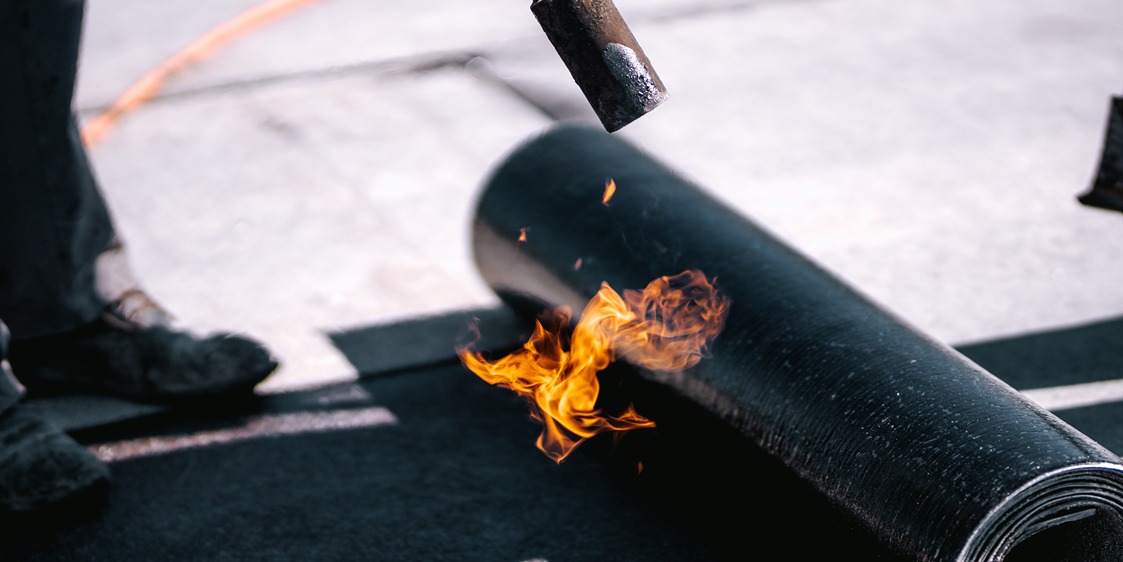
In the realm of commercial roofing, the term "torch down roofing" often surfaces, especially when discussing flat or low-slope roofs. But what exactly is it, and why should it matter to you? In this article, we'll delve into the intricacies of torch down roofing, its components, benefits, drawbacks, and how it stacks up against other roofing options.
Table of Contents
- What Is Torch Down Roofing?
- Advantages of Torch Down Roofing
- Drawbacks of Torch Down Roofing
- Torch Down Roofing vs. Other Modified Bitumen Application Methods
What Is Torch Down Roofing?
The Basics
Torch down roofing doesn't refer to a specific roofing material; it actually refers to a method of installing modified bitumen roofing, a type of pre-fabricated roofing membrane made of asphalt and polymerized rubber or plastic. "Torch down" roofing involves using a propane torch to melt the underside of a sheet of modified bitumen as it is rolled out across the roof. As the modified bitumen sheet cools, it bonds to the roof deck. This creates a waterproof seal that offers very strong protection against the elements.

Components and Layers
A typical torch down roof consists of multiple layers. The first layer is usually a base sheet, often made of fiberglass or polyester. Over this base sheet, a modified bitumen membrane is applied. Modified bitumen comes in two primary types: SBS (Styrene-Butadiene-Styrene) and APP (Atactic Polypropylene). SBS offers more flexibility, while APP is more rigid but offers better UV resistance.
Advantages of Torch Down Roofing
Durability
One of the most significant advantages of torch down roofing is its durability. The modified bitumen material is highly resistant to wear and tear, making it an excellent choice for roofs exposed to harsh weather conditions.
Drawbacks of Torch Down Roofing
Installation Risks
The use of an open flame during installation poses a fire risk, especially if not managed by experienced professionals. Safety protocols must be rigorously followed..
Torch Down Roofing vs. Other Modified Bitumen Application Methods
Cold Adhesive Method
How it Works
Cold adhesive application involves using a solvent-based adhesive to bond layers of modified bitumen to the roof. This method doesn't require heat, making it less risky in terms of potential fire hazards.
Pros and Cons
While the cold adhesive method eliminates the fire risk associated with torch down roofing, it often requires a longer curing time.
Self-Adhering Method
The Basics
Self-adhering, or "peel-and-stick," modified bitumen comes with its adhesive layer, eliminating the need for torches or cold adhesives. The sheets are simply peeled and stuck onto the substrate.
Considerations
This method is user-friendly and reduces installation time. However, it often comes at a higher material cost and may not be suitable for all types of substrates.
Hot-Mopped Method
The Process
Hot-mopping involves applying hot asphalt between layers of modified bitumen. This method has been around for a long time and is was the traditional way of installing bitumen roofs.
Pros and Cons
Hot-mopping is cost-effective and provides strong adhesion. However, it involves the use of hot, molten asphalt, which can be a fire hazard and emit toxic fumes.
Maintenance and Longevity
Regular Inspections
Like any roofing system, a torch down roof requires regular inspections to ensure its integrity. Look for signs of wear and tear, such as cracks or blisters, and address them promptly to extend the roof's lifespan.
Expected Lifespan
With proper maintenance, a torch down roof can last up to 20 years. However, this can vary depending on environmental conditions and the quality of the installation.
The Bottom Line
Torch down roofing offers a durable, waterproof solution for commercial buildings with flat or low-slope roofs. While it has its drawbacks, such as installation risks and environmental concerns, its benefits often make it a suitable choice for many commercial applications.
If you'd like to learn more about modified bitumen roofing, check out our complete guide.
Schedule a Free Call
Hop on a call with a GIDEON expert and learn more about how GIDEON can help you with your commercial roofing project.
Eric Schlossenberg started roofing when he was 24 years old, when he went to work as a Conklin contractor. Over the course of his career, he’s installed hundreds of thousands of square feet of roofing systems, but he still has a special passion for where he started in roof foam and coatings, and is a founding member of The Roof Coaters Guild of America. Gregarious and outgoing, Eric brings a unique sense of fun to his work, whether he’s on a roof or in the office.
